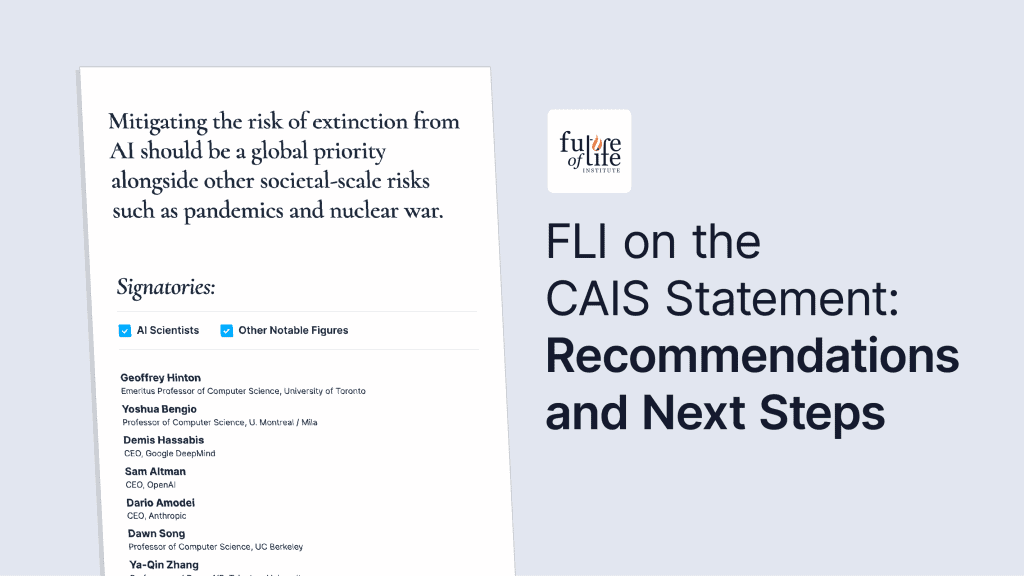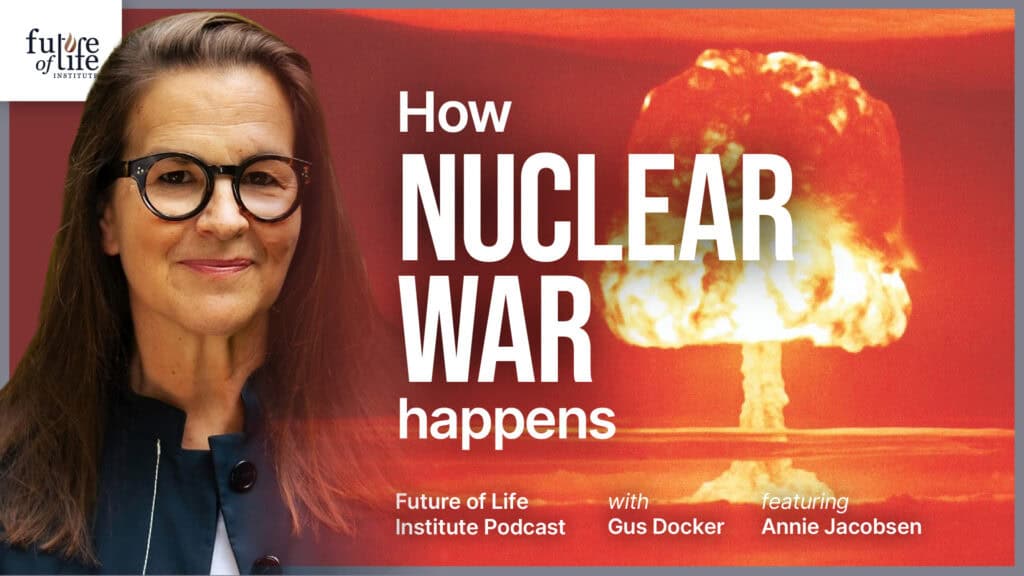Passing the Nuclear Baton

Contents
The following post was written by Joe Cirincione, President of the Ploughshares Fund, as part of our Huffington Post series on nuclear security.
President Obama entered office with a bold vision, determined to end the Cold War thinking that distorted our nuclear posture. He failed. He has a few more moves he could still make — particularly with his speech in Hiroshima later this month — but the next president will inherit a nuclear mess.
Obama had the right strategy. In his brilliant Prague speech, he identified our three greatest nuclear threats: nuclear terrorism, the spread of nuclear weapons to new states and the dangers from the world’s existing nuclear arsenals. He detailed plans to reduce and eventually eliminate all three, understanding correctly that they all must be tackled at once or progress would be impossible on any.
Progress Thwarting Nuclear Terror
Through his Nuclear Security Summits, Obama created an innovative new tool to raise the threat of nuclear terrorism to the highest level of global leadership and inspire scores of voluntary actions to reduce and secure nuclear materials. But it is, as The New York Times editorialized, “a job half done.” Instead of securing all the material in four years as originally promised, after eight years we still have 1,800 tons of bomb-usable material stored in 24 countries, some of it guarded less securely than we guard our library books.
If a terrorist group could get their hands on just 100 pounds of enriched uranium, they could make a bomb that could destroy a major city. In October of last year, anAP investigation revealed that nuclear smugglers were trying to sell weapons grade uranium to ISIS. Smugglers were overheard on wiretaps as saying that they wanted to find an ISIS buyer because, “they will bomb the Americans.”
More recently, we learned that extremists connected to the attacks in Paris and Belgium had also been videotaping a Belgian nuclear scientist, likely in the hopes of forcing “him to turn over radioactive material, possibly for use in a dirty bomb.”
Obama got us moving in the right direction, but when you are fleeing a forest fire, it is not just a question of direction but also of speed. Can we get to safety before catastrophe engulfs us?
Victory on Iran
His greatest success, by far, has been the agreement with seven nations that blocks Iran’s path to a bomb. This is huge. There are only two nations in the world with nuclear programs that threatened to become new nuclear-armed states: Iran and North Korea. North Korea has already crossed the nuclear Rubicon and we must struggle to see if we can contain that threat and even push them back. Thanks to the Iran agreement however, Iran can now be taken off the list.
For this achievement alone, Obama should get an “A” on his non-proliferation efforts. He is the first president in 24 years not to have a new nuclear nation emerge on his watch.
Bill Clinton saw India and Pakistan explode into the nuclear club in 1998. George W. Bush watched as North Korea set off its first nuclear test in 2006. Barack Obama scratched Iran from contention. Through negotiations, he reduced its program to a fraction of its original size and shrink-wrapped it within the toughest inspection regime ever negotiated. It didn’t cost us a dime. And nobody died. It is, by any measure, a major national security triumph.
Failure to Cut
Unfortunately Obama could not match these gains when it came to the dangers posed by the existing arsenals. The New START Treaty he negotiated with Russia kept alive the intricate inspection procedures previous presidents had created, so that each of the two nuclear superpowers could verify the step-by-step reduction process set in motion by Ronald Reagan and continued by every president since.
That’s where the good news ends. The treaty made only modest reductions to each nation’s nuclear arsenals. The United States and Russia account for almost 95 percent of all the nuclear weapons in the world, with about 7,000 each. The treaty was supposed to be a holding action, until the two could negotiate much deeper reductions. That step never came.
The “Three R’s” blocked the path: Republicans, Russians and Resistance.
First, the Republican Party leadership in Congress fought any attempt at reductions. Though many Republicans supported the treaty, including Colin Powell, George Shultz and Senator Richard Lugar, the entrenched leadership did not want to give a Democratic president a major victory, particularly in the election year of 2010. They politicized national security, putting the interest of the party over the interest of the nation. It took everything Obama had to finally get the treaty approved on the last day of the legislative session in December.
By then, the president’s staff had seen more arms control then they wanted, and the administration turned its attention to other pressing issues. Plans to “immediately and aggressively” pursue Senate approval of the nuclear test ban treaty were shelved and never reconsidered. The Republicans had won.
Worse, when Russia’s Vladimir Putin returned to power, Obama lost the negotiating partner he had had in President Medvedev. Putin linked any future negotiation to a host of other issues, including stopping the deployment of US anti-missile systems in eastern Europe, cuts in conventional forces and limits on long-range conventional strike systems the Russian claimed threatened their strategic nuclear forces. Negotiations never resumed.
Finally, he faced resistance from the nuclear industrial complex, including many of those he himself appointed to implement his policies. Those with a vested financial, organizational or political interest in the thousands of contracts, factories, bases and positions within what is now euphemistically call our “nuclear enterprise” will do anything they can to preserve those dollars, contracts and positions. Many of his appointees merely paid lip-service to the president’s agenda, paying more attention to the demands of the services, or the contractors or their own careers. Our nuclear policy is now less determined by military necessity or strategic doctrine, than by self-interest.
It is difficult to find someone who supports keeping our obsolete Cold War arsenal that is not directly benefiting from, or beholden to, these weapons. In a very strange way, the machines we built are now controlling us.
The Fourth Threat
To make matters worse, under Obama’s watch these three “traditional” nuclear threats have been joined by a fourth: nuclear bankruptcy.
Obama pledged in Prague that as he reduced the role and number of nuclear weapons in U.S. policy, he would maintain a “safe, secure and reliable” arsenal. He increased spending on nuclear weapons, in part to make much needed repairs to a nuclear weapons complex neglected under the Bush administration and, in part, to win New START votes from key senators with nuclear bases and labs in their states.
As Obama’s policy faltered, the nuclear contracts soared. The Pentagon has embarked on the greatest nuclear weapons spending spree in U.S. history. Over the next 30 years the Pentagon is planning to spend at least $1 trillion on new nuclear weapons. Every leg of the U.S. nuclear triad – our fleet of nuclear bombers, ballistic missile submarines, and ICBMs – will be completely replaced by a new generation of weapons that will last well into the later part of this century. It is a new nuclear nightmare.
What Should the Next President Do?
While most of us have forgotten that nuclear weapons still exist today, former Secretary of Defense Bill Perry warns that we “are on the brink of a new nuclear arms race” with all the perils, near-misses and terrors you thought ended with the Cold War. The war is over; the weapons live on.
The next president cannot make the mistake of believing that incremental change in our nuclear policies will be enough to avoid disaster. Or that appointing the same people who failed to make significant change under this administration, will somehow help solve the challenges of the next four years. There is serious work to be done.
We need a new plan to accelerate the elimination of nuclear material. We need a new strategy for North Korea. But most of all, we need a new strategy for America. It starts with us. As long as we keep a stockpile of nuclear weapons far in excess of any conceivable need, how can we convince other nations to give up theirs?
The Joint Chiefs told President Obama that he could safely cut our existing nuclear arsenal and that we would have more than enough weapons to fulfill every military mission. It did not matter what the Russians did. If they cut or did not cut, honored the New START Treaty or cheated. We could still cut down to about 1000 to 1100 strategic weapons and still handle every contingency.
The next president should do that. Not just because it is sound strategic policy – but because it is essential financial policy too. We are going broke. We do not have enough money to pay for all the weapons the Pentagon ordered when they projected ever-rising defense budgets. “There’s a reckoning coming here,” warns Rep. Adam Smith, the ranking Democrat on the House Armed Services Committee. “Do we really need the nuclear power to destroy the world six, seven times?”
The Defense Department admits it does not have the money to pay for these plans. Referring to the massive ‘bow wave‘ of spending set to peak in the 2020s and 2030s, Pentagon Comptroller Mike McCord said “I don’t know of a good way for us to solve this issue.”
In one of more cynical admissions by a trusted Obama advisor, Brian McKeon, the principal undersecretary of defense for policy, said last October, “We’re looking at that big bow wave and wondering how the heck we’re going to pay for it,” And we’re “probably thanking our stars we won’t be here to have to answer the question,” he added with a chuckle.
He may think it’s funny now, but the next president won’t when the stuff hits the fan in 2017. One quick example: The new nuclear submarines the Navy wants will devour half of the Navy’s shipbuilding budget in the next decade. According to the Congressional Research Service, to build 12 of these new subs, “the Navy would need to eliminate… a notional total of 32 other ships, including, notionally, 8 Virginia-class attack submarines, 8 destroyers, and 16 other combatant ships.”
These are ships we use every day around the world on real missions to deal with real threats. They launch strikes against ISIS, patrol the South China Sea, interdict pirates around the horn of Africa, guarantee the safety of international trade lanes, and provide disaster relief around the globe.
The conventional navy’s mission is vital to international security and stability. It is foolish, and dangerous, to cut our conventional forces to pay for weapons built to fight a global thermonuclear war.
Bottom-Up
The next President could do a bottom-up review of our nuclear weapons needs. Don’t ask the Pentagon managers of these programs what they can cut. You know the answer you will get. Take a blank slate and design the force we really need.
Do we truly need to spend $30 billion on a new, stealthy nuclear cruise missile to put on the new nuclear-armed stealth bomber?
Do we truly need to keep 450 intercontinental ballistic missiles, whose chief value is to have the states that house them serve as targets to soak up so many of the enemy’s nuclear warheads that it would “complicate an adversary’s attack plans?” Do Montana and Wyoming and North Dakota really want to erect billboards welcoming visitors to “America’s Nuclear Sponge?”
If President Trump, or Clinton, or Sanders put their trust in the existing bureaucracy, it will likely churn out the same Cold War nuclear gibberish. It will be up to outside experts, scientists, retired military and former diplomats to convince the new president to learn from Obama’s successes and his failures.
Obama had the right vision, the right strategy. He just didn’t have an operational plan to get it all done. It is not that hard, if you have the political will.
Over to you next POTUS.
About the Future of Life Institute
The Future of Life Institute (FLI) is a global non-profit with a team of 20+ full-time staff operating across the US and Europe. FLI has been working to steer the development of transformative technologies towards benefitting life and away from extreme large-scale risks since its founding in 2014. Find out more about our mission or explore our work.
Related content
Other posts about Nuclear, Partner Orgs

Designing Governance for Transformative AI: Top Proposals from the FLI & Foresight Institute Hackathon



